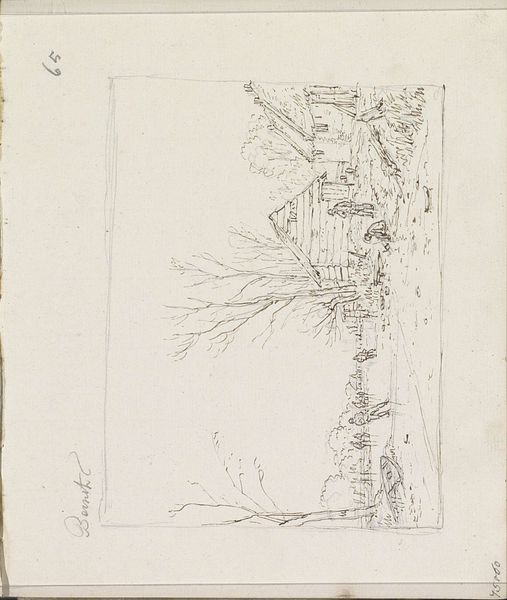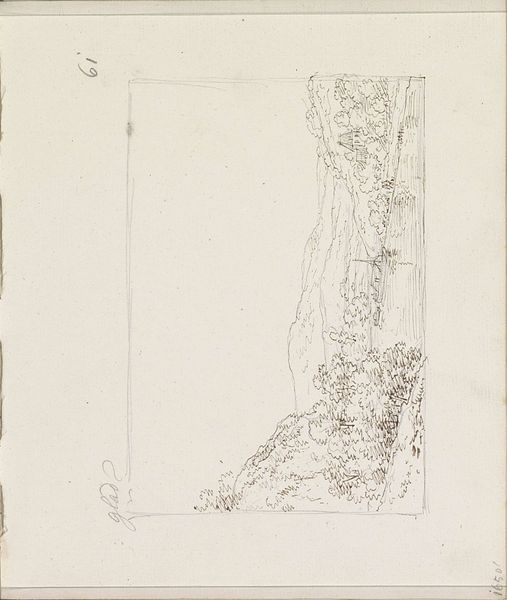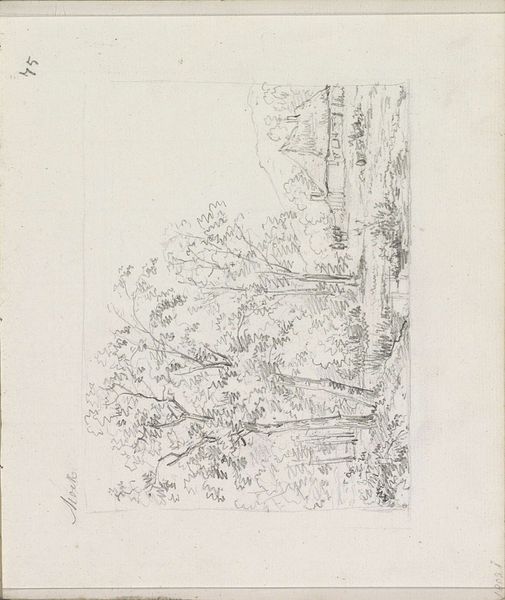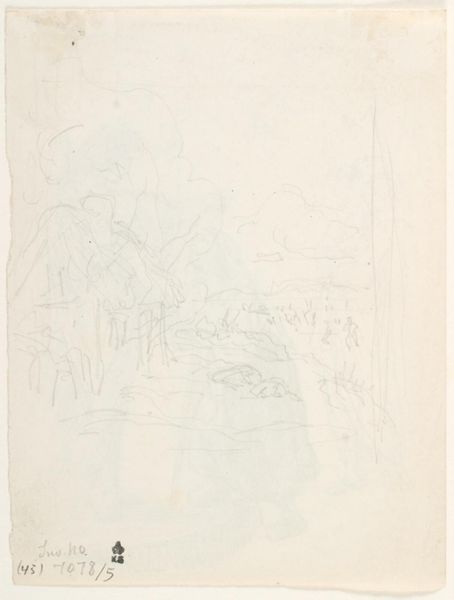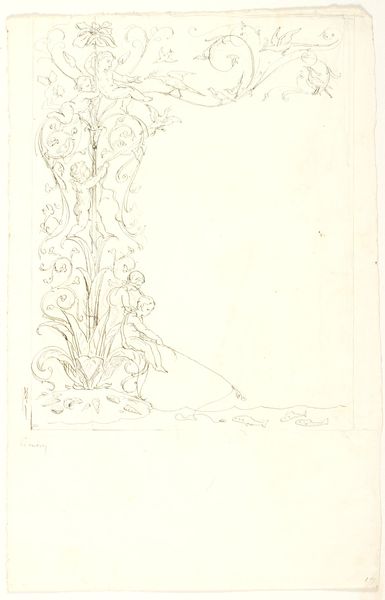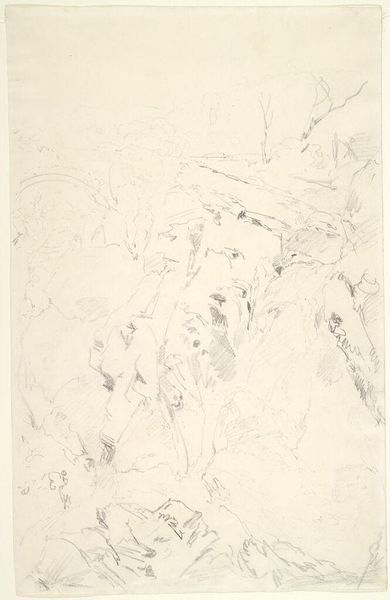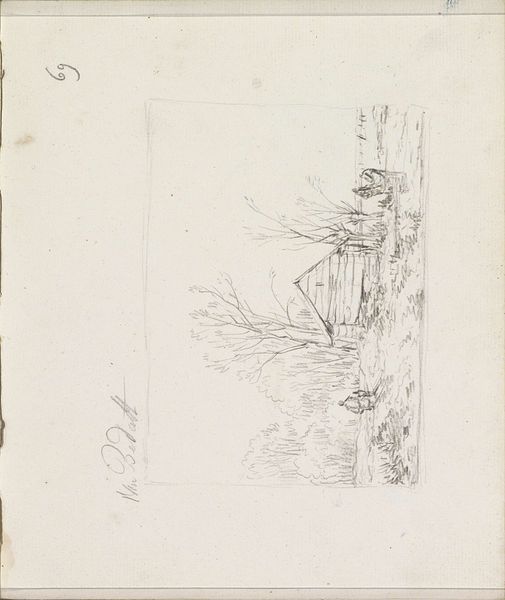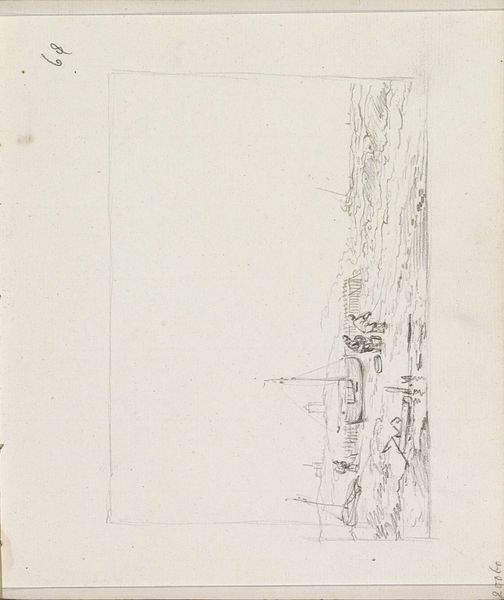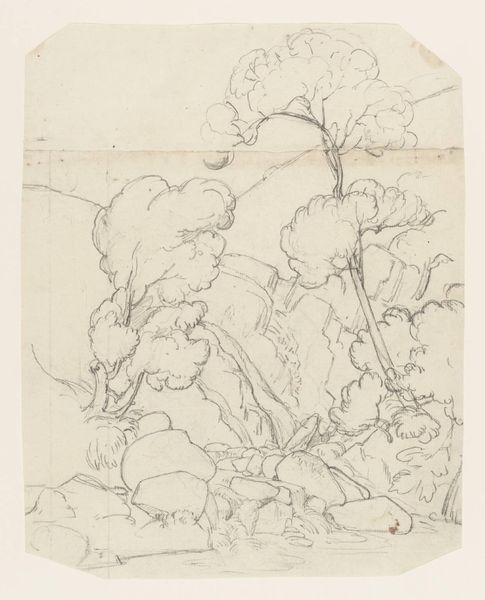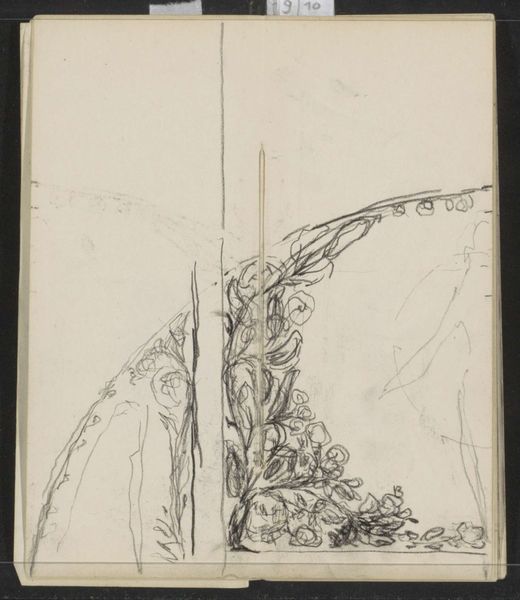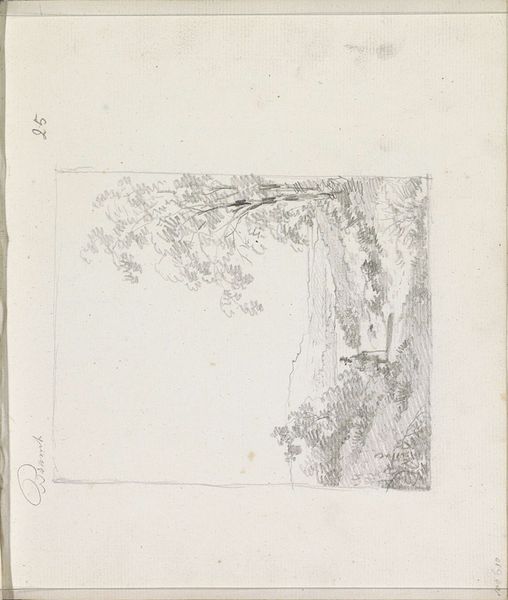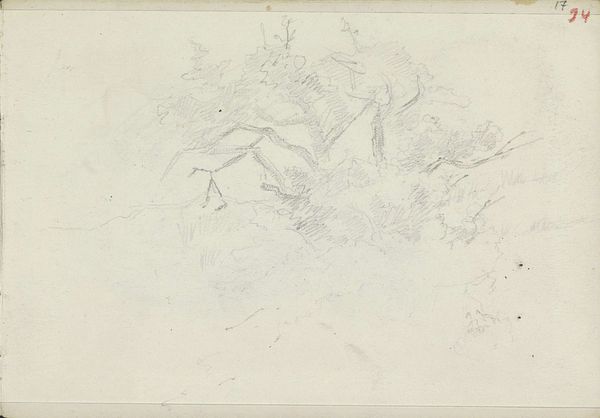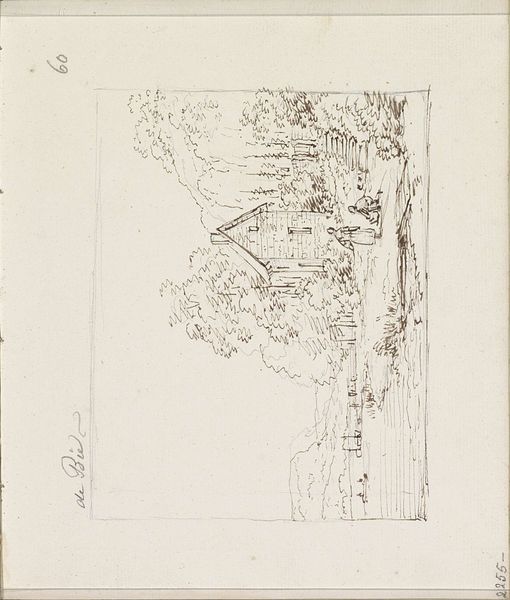
Rustende reiziger met hond in een heuvellandschap c. 1825 - 1829
0:00
0:00
andreasschelfhout
Rijksmuseum
drawing, ink
#
drawing
#
pen sketch
#
landscape
#
etching
#
ink
#
romanticism
Copyright: Rijks Museum: Open Domain
Editor: This is "Resting Traveller with Dog in a Hilly Landscape," a drawing in ink by Andreas Schelfhout, dating from around 1825 to 1829. It feels quiet and a bit lonely. What do you see in this piece? Curator: I see a microcosm of 19th-century Romanticism's complex relationship with nature. On the surface, it's a pastoral scene: a traveler at rest, accompanied by their dog. But look closer: the landscape is not just scenery, but an active presence. The sketch, with its contrasts and light effects, represents humanity’s place within an imposing and potentially indifferent natural order. The traveler could even symbolize land use. What do you think about that interpretation? Editor: I hadn't thought about the traveler as connected to land use. It makes me think about the relationship between nature and burgeoning industrialization during that period. Curator: Precisely. And the "resting" aspect is crucial. Is it respite, or resignation? Consider, too, the social context. The right to roam, the enclosure movement... how do those societal forces play into this seemingly simple image of a traveler at rest? This wasn’t just about aesthetics. Editor: That’s a fascinating point. The idea of "resting" taking on political weight. It changes how I see the drawing entirely. Curator: Art is rarely just "art," right? It's a mirror reflecting and refracting the anxieties, dreams, and power structures of its time. Editor: Right. Thanks, I've learned a lot, it will be very helpful to understand it better. Curator: Absolutely. I learned as well, these works open the possibility of thinking in our history.
Comments
No comments
Be the first to comment and join the conversation on the ultimate creative platform.
